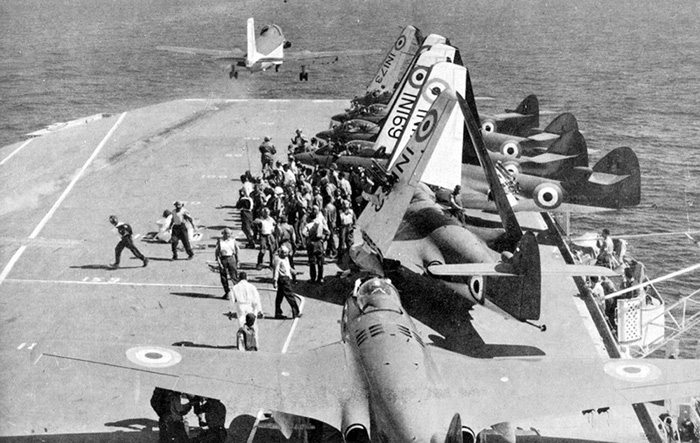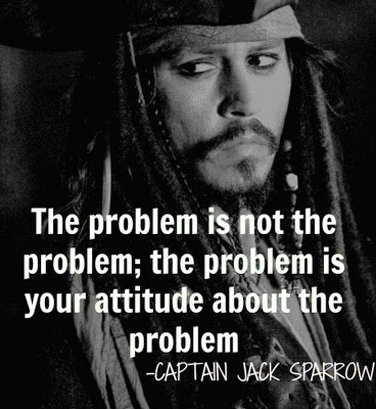India and Russia have had such warm and extremely friendly relations that it often surprises me as to why this political and strategic warmth in relations hasn't been able to instil a greater interaction between the Indian and Russian people in general. I mean we make everything from guns to supersonic fighter jets with the Russians but I barely come across an Indian who wants to go to Russia for higher education or who has a Russian girlfriend for that matter! But then, Britain and United States share good relations as far as military is concerned and how often do you see an American praising England? So, I guess it is nothing abnormal between us and the Russians.
 |
| Indian jets bombing Karachi Harbour during the war of '71 |
The world in 1960-70s was very different from what it is now. It was extremely bipolar - There were Pro US countries, and there were Pro Soviet countries. India was of course the founding member of the non aligned group, but then the rest of the world judged India to be inclined more or less towards the Soviet side. On the other hand, Pakistan was a close ally of USA, already a member of the American lead military pacts - CENTO and SEATO. So, India's declaration of war with Pakistan, put the entire pro-US section as unease. During the first week of the war, US had restricted itself to supplying arms and ammunition to Pakistan and putting diplomatic pressure on India by sending numerous letters and calls to Indira Gandhi. Their view, however, was challenged when Indian forces restricted the Pakistan's Navy to the ports of Karachi and carried out totally successful air raids and land attacks deep Inside East Pakistan. It was then, that Nixon was forced to think that diplomacy was not going to be enough to stop India, and military force was considered. The plan was to move all possible military forces towards India and generate fear in Indian political command to force them into negotiations. One of the most potent forces in the United States, the Task Force 74 led by the aircraft carrier USS Enterprise sailed into the bay of Bengal. And why will the Britain, strong supporter of United States, get left behind? A carrier battle group lead by carrier HMS Eagle was moved towards the bay of Bengal. The Turks were asked to fly jets over Indian soil. Jordan, Iran, Saudi Arabia too had either agreed, or were in process of surrounding India with whatever they had - ships, jets, anything. Nixon had been counting strongly on China. Many letters were addressed to the Chinese political top notch to intervene in the situation. United States wanted some sort of Chinese involvement in the war to build pressure on India. Desperation was clear in what he shared with Kissinger "All they've got to do is move something. Move a division. You know, move some trucks. Fly some planes. You know, some symbolic act. We're not doing a goddamn thing, Henry, you know that." But the Chinese didn't even warn the Indians. They decided it was not in their interest to be nosy.

And what happened? India liberated Bangladesh, defeated Pakistan badly and established her regional supremacy. With 'almost' every nation criticizing India's decision to go on the war, United States and Britain moving their forces into Indian Ocean, hostile neighbour on the north eastern border and an ongoing war to deal with, how was India able to turn the table to its advantage? Because, we had a good friend. A really valuable friend who understood and shared the cause for which we had gone to war. Who said she'll take care of things and she did. Things could have been very different if China had entered the war. But Soviet Union had assured Indira Gandhi that if Chinese decided in favour of any misadventure, they'll intervene and contain China from the North. On December 10, Nixon instructed Kissinger to ask the Chinese to move some troops toward the Indian frontier. 'Threaten to move forces or move them, Henry, that's what they must do now.' China feared any action on India might attract Soviet aggression. At this, US assured China that any action taken by Soviet Union will be countered by US to protect China. Pakistani army had somehow maintained their position and resisted Indian advancement. They believed China is preparing to open the Northern front which will slow down or completely stop the Indian advancement. In fact, the myth of Chinese activity was also communicated to Pakistan's army to boost their moral, to keep their will to fight and hope alive. Lieutenant General A A K Niazi, the Pakistani army commander in Dhaka, was informed: "NEFA front has been activated by Chinese, although the Indians, for obvious reasons, have not announced it." But Beijing never did. Chinese could not risk a war with Russians.
 |
| India's aircraft carrier 'INS Vikrant' in operation during the 1971 war. It effectively kept Pakistani Navy holed up in Karachi Harbour. |
Russia had been with India all the way. In fact they were a step ahead of the Americans and the English. Remember HMS Eagle was moving towards the Indian coasts? Well the Russians had been tracking their movement already. Tee Hee. Confidential - The Commander of the Military Intelligence Service Gen. Pyotr Ivashutin. "The Soviet Intelligence has reported that the English operative connection has come nearer to territorial India, water led by an aircraft carrier “Eagle” [On December 10]. For helping friendly India, Soviet government has directed a group of ships under the command of contr-admiral V. Kruglyakov."
Vladimir Kruglyakov, the former (1970-1975) Commander of the 10th Operative Battle Group (Pacific Fleet) remembers:
"I was ordered by the Chief Commander to track the British Navy's advancement, I positioned our battleships in the Bay of Bengal and watched for the British carrier "Eagle".
But Soviet Union didn't have enough force to resist if they encountered the British Carrier. Therefore, to support the existing Soviet fleet in the Bay of Bengal, Soviet cruisers, destroyers and nuclear submarines, equipped with anti ship missiles, were sent from Vladivostok.
In reaction English Navy retreated and went South to Madagascar.
Soon the news of American carrier Enterprise and USS Tripoli's advancement towards Indian water came.
 |
| USS Enterprise |
V. Kruglyakov “ I had obtained the order from the commander-in-chief not to allow the advancement of the American fleet to the military bases of India”
"We encircled them and aimed the missiles at the 'Enterprise'. We had blocked their way and didn't allow them to head anywhere, neither to Karachi, nor to Chittagong or Dhaka".
The Soviet ships had small range rockets (only upto 300 KM). Therefore, to hold the opponent under the range, commanders ran risks of going as near to the enemy as possible.
"The Chief Commander had ordered me to lift the submarines and bring them to the surface so that it can be pictured by the American spy satellites or can be seen by the American Navy!' It was done to demonstrate, that we had all the needed things in Indian Ocean, including the nuclear submarines. I had lifted them, and they recognized it. Then, we intercepted the American communication. The commander of the Carrier Battle Group was then the counter-admiral Dimon Gordon. He sent the report to the 7th American Fleet Commander: 'Sir, we are too late. There are Russian nuclear submarines here, and a big collection of battleships'.
Americans returned and couldn't do anything. Soviet Union had also threatened China that, if they ever opened a front against India on its border, they will receive a tough response from North. Russia made sure nothing distracted India from its goal. There were there for us when war started, and they were there until the wreckage of the war had been cleaned. Wreckage...well that wreckage was no ordinary wreckage it was wreckage made of 'gold', literally. But let me leave that story for some other day, some other post.
 |
| Russia's contributions to India's security: FGFA, Sukhoi Su 30MKI, Brahmos, T90, INS Chakra, INS Vikramaditya. |
Its 2013 now, things have changed. Countries once determined to destroy us are eager to do business with India, sign nuclear pacts and look at us to take care of things in the region. It is so funny. Americans once wanted the Chinese to contain India, now they want us to contain China. Iran readied its jets to hit India in favour of Americans, now Iran looks to India to keep its economy going amid sanctions imposed by United States. Selfishness drives the globe. But one thing has not changed. The friendship India and Russia share. Never once in so many decades Russia and India shared a bitter moment. So if 'others' ever wonder why we favour Russian equipment over theirs, they should understand that probably it is because Indians mean more than business. We look for people we can trust, count on.
All I hope is that if someday Russia needs India the way we needed them back in '71, India should be able to do that just fine.
 13:18
13:18
 Unknown
Unknown



































